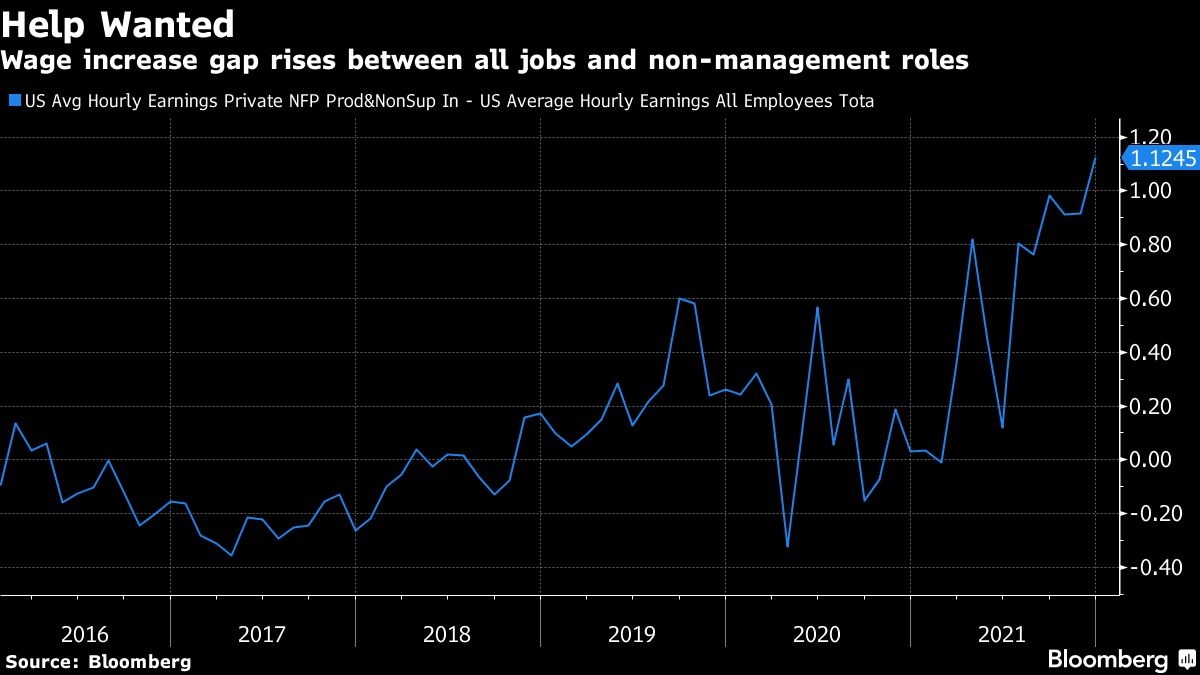Jan 7, 2022
Hunt for cheap labour gets more expensive for corporate America
, Bloomberg News

Low-earning workers are getting recruited at higher rates than other income brackets, which is pushing up wages and raising costs for businesses.
Today’s Chart of the Day shows the difference between average hourly earnings for all employees and those in non-management roles on a year-over-year basis, illustrating how employers are increasing their hiring of labourers.

The pandemic has played a major role in the move, as have supply-chain disruptions. But the bottom line is as demand rebounded in 2021, much of Corporate America struggled to keep up, with workers demanding better wages and benefits and improved safety conditions.
“What’s interesting is that wage growth is strong...but it’s only outpacing inflation in the low wage-paying sectors because that’s where we’ve got the most shortage of labour. People are having to pay up to get people to work,” Ellen Zentner, Morgan Stanley’s chief U.S. economist, said in a Bloomberg TV interview. “As inflation comes down, and wages remain strong, we should get real wages growing across all income segments.”
The phenomenon is best seen at Walmart Inc., the biggest employer in the U.S. The retailer’s average wage nationwide is US$16.40 per hour with some starting salaries as high as US$17 per hour. Walmart’s average wage was around US$14 an hour in February. And it still trails what workers at rivals Costco Wholesale Corp. and Target Corp. make.
As a result, the rising demand for labour is eating into bottom lines at some of America’s biggest companies. In its third quarter earnings, McDonald’s Corp. said it expected 2021 wages to rise 10 per cent from 2020 compared with a 4 per cent increase in commodity costs. Meanwhile, Amazon.com Inc., Starbucks Corp. are facing pushes for unionization, and Deere & Co. recently resolved it’s biggest worker strike in decades.



